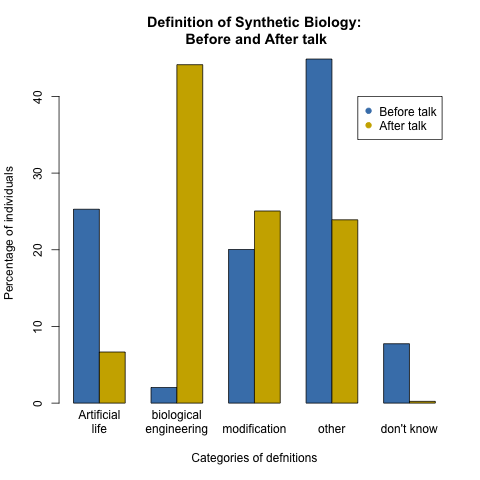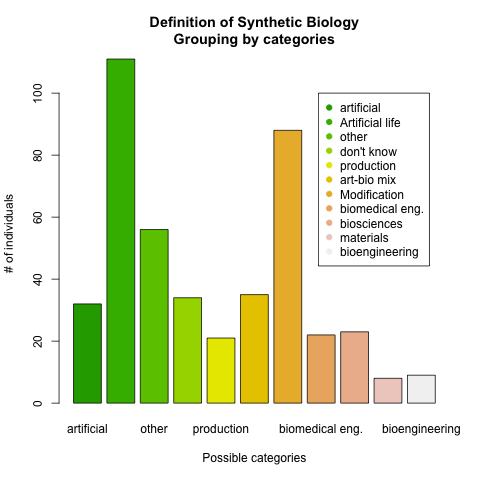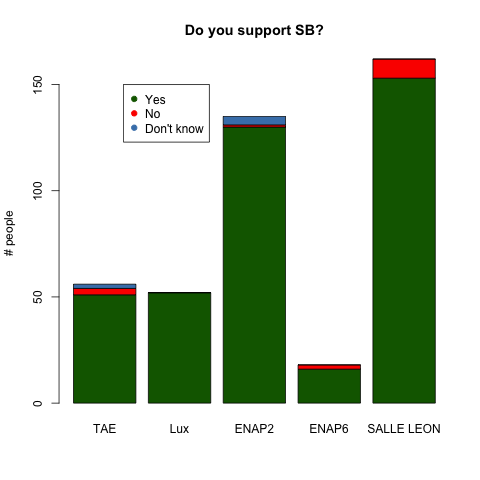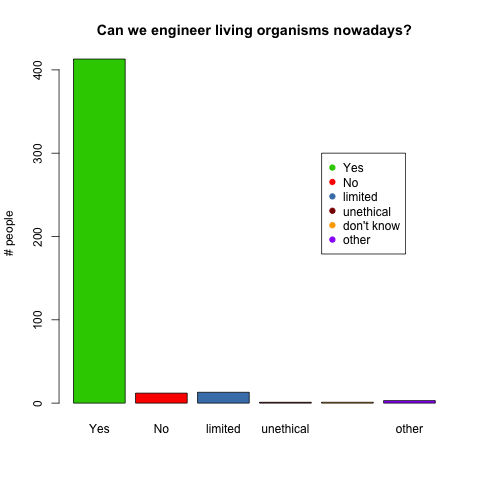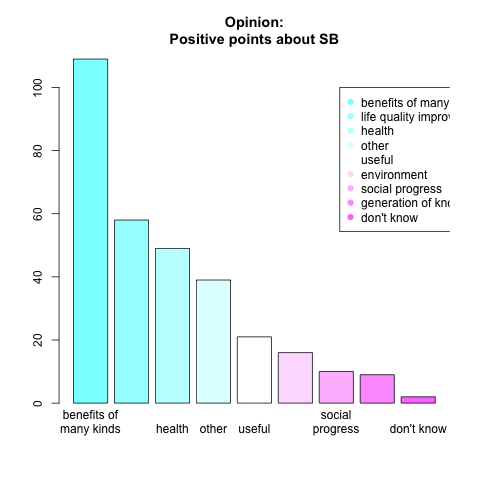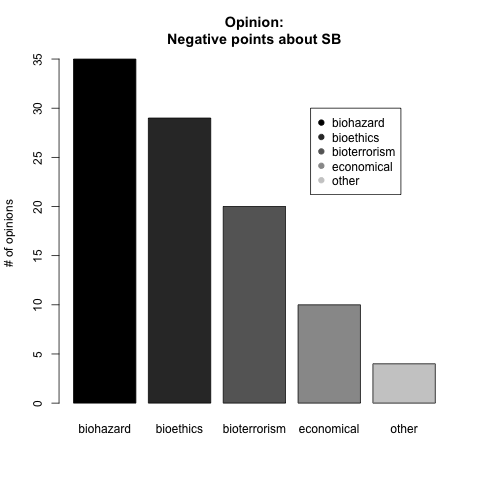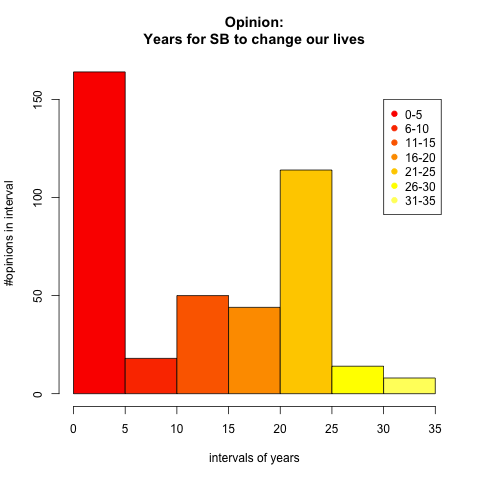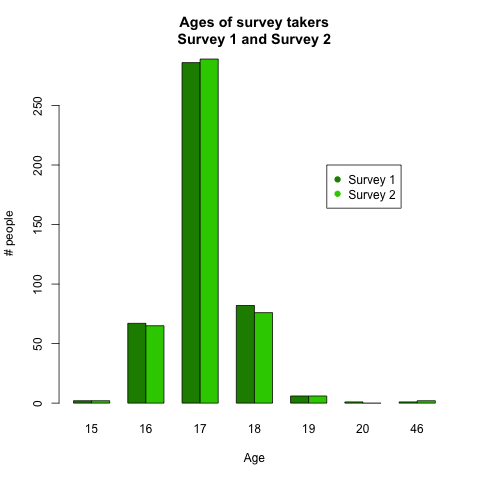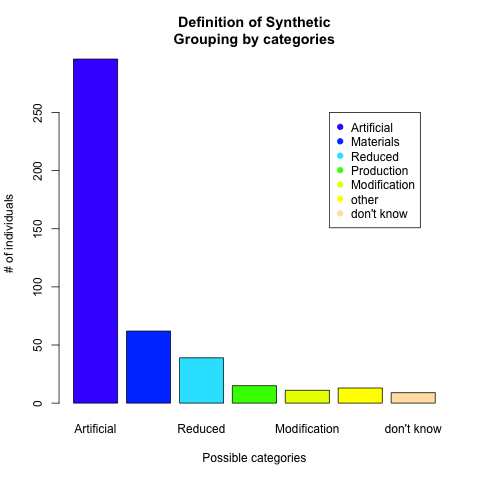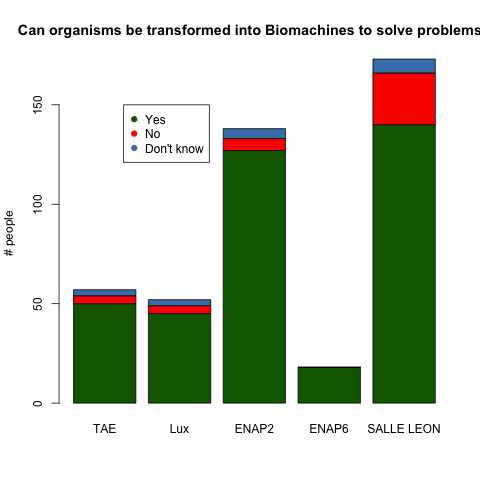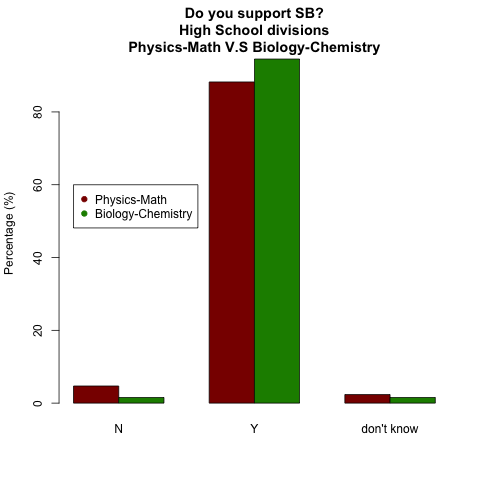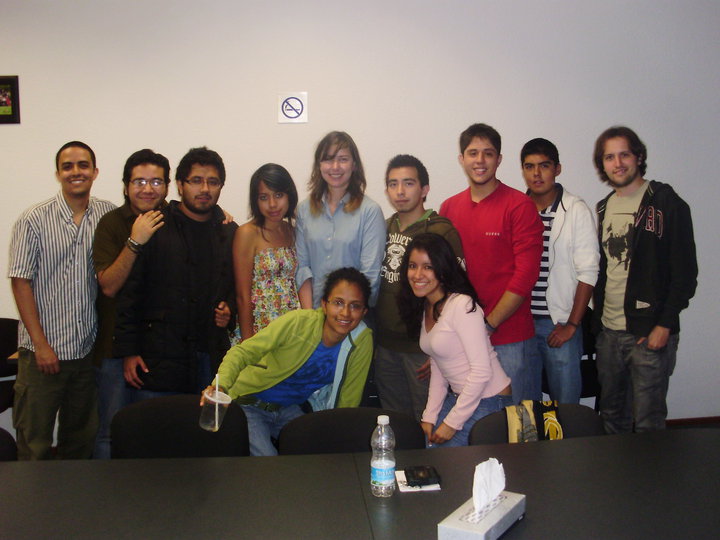Team:UNAM-Genomics Mexico/Safety
From 2010.igem.org
Kurupaclau (Talk | contribs) |
|||
| (5 intermediate revisions not shown) | |||
| Line 33: | Line 33: | ||
|Main_Content= | |Main_Content= | ||
__NOTOC__ | __NOTOC__ | ||
| - | |||
| - | |||
| - | |||
| - | |||
| - | |||
| - | |||
| - | |||
| - | |||
| - | |||
| - | |||
| - | |||
| - | |||
| - | |||
| - | |||
| - | |||
| - | |||
| - | |||
| - | |||
| - | |||
| - | |||
| - | |||
| - | |||
| - | |||
| - | |||
| - | |||
| - | |||
| - | |||
| - | |||
| - | |||
| - | |||
| - | |||
| - | |||
| - | |||
| - | |||
| - | |||
| - | |||
| - | |||
| - | |||
| - | |||
| - | |||
| - | |||
| - | |||
| - | |||
| - | |||
=='''Public Perception'''== | =='''Public Perception'''== | ||
| Line 82: | Line 38: | ||
==='''Human Practices'''=== | ==='''Human Practices'''=== | ||
| - | + | [[Image:UNAM-Genomics_Mexico_Hp_physical_evidence.jpg|thumb|450px|center|Physical Evidence]] | |
| - | [[ | + | |
| - | + | Please select an option in the dropdown menu below, to find more information about what we did. | |
| - | + | ||
| - | + | ||
| - | + | ||
| - | + | ||
| - | + | ||
| - | + | ||
| - | + | ||
| - | + | ||
| - | + | ||
| - | + | ||
| - | + | ||
| - | + | ||
| - | + | ||
| - | + | ||
| - | + | ||
| - | + | ||
| - | + | ||
<html> | <html> | ||
<form name="dropmsgform"> | <form name="dropmsgform"> | ||
| - | <select name="dropmsgoption" size=" | + | <select name="dropmsgoption" size="8" style="width:300" onChange="expandone()"> |
<option selected>Background</option> | <option selected>Background</option> | ||
<option>Survey 1</option> | <option>Survey 1</option> | ||
| Line 118: | Line 56: | ||
</select> | </select> | ||
<br> | <br> | ||
| - | |||
<div id="dropmsg0" class="dropcontent"> | <div id="dropmsg0" class="dropcontent"> | ||
</html> | </html> | ||
| - | ====Human Practice | + | ====Human Practice: The Synthetic Conquest of Mexico.==== |
| - | Objective | + | Objective. |
| + | Create a solid opinion about synthetic biology in Mexico, so that it can be exploited best for the country's needs. | ||
=====Communicate and Conquer===== | =====Communicate and Conquer===== | ||
| Line 132: | Line 70: | ||
We will soon meet the time when the advance on Synthetic Biology (SB) will touch the everyday life of the world population, as has happened with other technologies on which nowadays we have an apparent dependence, like the internet. However, nobody warned us about the magnitude of the impact such technologies could have upon our society and our decisions. For synthetic biology, if it is desired to change people's lives, it becomes part of the revolution, as well as a responsibility, to: | We will soon meet the time when the advance on Synthetic Biology (SB) will touch the everyday life of the world population, as has happened with other technologies on which nowadays we have an apparent dependence, like the internet. However, nobody warned us about the magnitude of the impact such technologies could have upon our society and our decisions. For synthetic biology, if it is desired to change people's lives, it becomes part of the revolution, as well as a responsibility, to: | ||
| - | * | + | * Extend and diffuse its concept in practical terms for non-science-oriented people to deal with, |
| - | * | + | * Achieve that individuals understand the concept, the potential benefits, and potential risks of SB, |
| - | * | + | * Foment the creation of well founded individual opinions towards the topic. |
| - | + | ||
| - | + | ||
| + | These musts will be the objectives to follow in our human practice: '''The Synthetic Conquest of Mexico, Part I'''. | ||
=====Strategy===== | =====Strategy===== | ||
| Line 525: | Line 462: | ||
Providing the definition.- Our strategy reached its objective | Providing the definition.- Our strategy reached its objective | ||
| - | As mentioned before, our main goal was to provide people with a “practical definition” of synthetic biology which is oriented towards the concept of engineering biological systems. As can be seen in | + | As mentioned before, our main goal was to provide people with a “practical definition” of synthetic biology which is oriented towards the concept of engineering biological systems. As can be seen in '''Figure 1''', when comparing personal definitions of synthetic biology before and after the talk given to students, nearly the half of the students surveyed (~42%) oriented their definitions towards the concept of biological engineering. This involves the use of interchangeable parts, design and construction of biological systems as opposed to artificial life per se, mixing engineering with biology and the pursue of a goal or benefit. '''Figure 2''' shows all the definition categories for students before the talk. Although many people remained with the concept of genetic modification once the talk was given, this result suggests that the goal of providing the definition was accomplished. |
| Line 531: | Line 468: | ||
=====Public Opinion===== | =====Public Opinion===== | ||
| - | Several aspects concerning public opinion about the topic were addressed. These include a) to obtain an estimate of people supporting SB after attending the talk by schools(Figure 3), b) to evaluate the belief of engineering biology in the present day (Figure 4), c) meet people's opinion about what positive and negative consequences are brought about by the advance of SB as a technology (Figures 5 and 6), and d) to estimate how many years people expect to pass before SB changes our lives (Figure 7). In a general sense, the results suggest that the high school students are strongly supportive towards the development of synthetic biology, and the number of individuals that initially didn't believe in engineering organisms contrasts with the amount of students believing in the possibility of engineering organisms now. Figure 3 and 11, column 5 (La Salle León School) show a bigger proportion of disapproval towards SB. While the reason for this remains to be elucidated, a possible factor could be the religious orientation of the institution. No significant orientation in negative comments was detected for this school. | + | Several aspects concerning public opinion about the topic were addressed. These include a) to obtain an estimate of people supporting SB after attending the talk by schools('''Figure 3'''), b) to evaluate the belief of engineering biology in the present day ('''Figure 4'''), c) meet people's opinion about what positive and negative consequences are brought about by the advance of SB as a technology ('''Figures 5 and 6'''), and d) to estimate how many years people expect to pass before SB changes our lives ('''Figure 7'''). In a general sense, the results suggest that the high school students are strongly supportive towards the development of synthetic biology, and the number of individuals that initially didn't believe in engineering organisms contrasts with the amount of students believing in the possibility of engineering organisms now. '''Figure 3 and 11''', column 5 (La Salle León School) show a bigger proportion of disapproval towards SB. While the reason for this remains to be elucidated, a possible factor could be the religious orientation of the institution. No significant orientation in negative comments was detected for this school. |
| - | + | With respect to positive and negative comments, it is important to notice that negative opinions were considerably less than positive ones (98 compared to 313), so in order to avoid any biases in future surveys of this kind, more emphasis on possible problematics has to be done. Unfortunately, different time assignment from an institution to another made it difficult to organize debates addressing positive as well as negative consequences. | |
| - | + | '''Figure 7''' shows intervals of time in which the students believe SB will change our lives. During the talk, emphasis was made that SB technology will probably make a revolution on the way we live now, and that this revolution was about to happen. All this was supported by the various examples of iGEM technological, health-related and environmental ideas. Given this, the vast majority of people expect this change to happen within the next 5 to 10 years; moreover, 5 and 10 years correspond to the peaks with most votes. The next peak is around 20 years, where the accumulation of votes accumulates and forms a second peak in this interval. Thus, the students surveyed either believe that advances in SB are happening fast enough, or that delays are bound to occur because of the technological transition, commercialization, etc. | |
| - | + | In short, the majority of high school students surveyed have a positive attitude towards SB and its consequences in our lives. This can be explained because the problems they think the most about ('''Figure 2''') could be given a solution by this technology. Also encouraging is the potential improvement of life quality and human capabilities that SB promises ('''Figure 5'''). | |
====Discussion==== | ====Discussion==== | ||
| Line 549: | Line 486: | ||
Since the social objectives of Synthetic Biology involve making people in the world aware of the upcoming revolution, our team's survey-talk-survey strategy succeeded in a) designing and applying a controllable strategy to provide a practical definition for Synthetic Biology based on biological engineering, b) starting diffusion about Synthetic Biology in Mexican high school students so they are prepared for the future, and c) setting grounds to expand the communication of synthetic biology across all the different groups of people in Mexico. The scope of this work is intended to grow dramatically in future iGEM competitions. | Since the social objectives of Synthetic Biology involve making people in the world aware of the upcoming revolution, our team's survey-talk-survey strategy succeeded in a) designing and applying a controllable strategy to provide a practical definition for Synthetic Biology based on biological engineering, b) starting diffusion about Synthetic Biology in Mexican high school students so they are prepared for the future, and c) setting grounds to expand the communication of synthetic biology across all the different groups of people in Mexico. The scope of this work is intended to grow dramatically in future iGEM competitions. | ||
| - | + | Such a “standardization” in communication is a key element in order to correctly direct the diffusion of information about synthetic biology in Mexico and other countries, and the application of the standard will render the understanding of SB manageable to every population in the world, so that all the benefits we can get from this revolution become our goals. | |
| Line 557: | Line 494: | ||
</form> | </form> | ||
</html> | </html> | ||
| + | |||
| + | |||
| + | These are the results for our Human Practices activities. | ||
| + | |||
| + | <gallery> | ||
| + | image:UNAM-Genomics_Mexico_Comparison_before_after_talk_bluegold.png|Figure 1. Definition of SB: Before & After | ||
| + | |||
| + | image:UNAM-Genomics_Mexico_Synthetic_biology_definition.png|Figure 2. Popular associations of SB before talk | ||
| + | image:UNAM-Genomics_Mexico_Support_by_school_green.png|Figure 3. Support by School | ||
| + | image:UNAM-Genomics_Mexico_Engineering_organisms_nowadays.png|Figure 4. Can we engineer organisms Now? | ||
| + | image:UNAM-Genomics_Mexico_Possitive_points_SB.png|Figure 5. Positive Points of SB | ||
| + | image:UNAM-Genomics_Mexico_Negative_points_SB.png|Figure 6. Negative Points of SB | ||
| + | image:UNAM-Genomics_Mexico_Years_for_sb_change.png|Figure 7. Years until SB changes your World | ||
| + | image:UNAM-Genomics_Mexico_Ages_survey1_survey2.png|Figure 8. Ages per Survey | ||
| + | image:UNAM-Genomics_Mexico_Synthetic_definition.png|Figure 9. Popular associations of SB after talk | ||
| + | image:UNAM-Genomics_Mexico_Biomachine_by_school_green.png|Figure 10. Possibility of Biomachines by School | ||
| + | image:UNAM-Genomics_Mexico_Support_area1_vs_area2.png|Figure 11. Support, area 1 vs. area 2 | ||
| + | </gallery> | ||
| + | |||
| + | The raw data will be available [[media:UNAM-Genomics_Mexico_HP_raw_data1.xls|here]]. | ||
| + | |||
| Line 571: | Line 529: | ||
her opinion about it, she found interesting our proyect specially because it has the potential to stablish communication between life and computers. | her opinion about it, she found interesting our proyect specially because it has the potential to stablish communication between life and computers. | ||
| - | Second part, was focussed in perpectives in SynBio specially the work on Eukarya Synthetic Biology, she was fascinated whit proyect of Heildelberg 2009. Also we talked about part Registry issues, and finally we asked to her, about her own definition of sytntetic biology; she said that: | + | Second part, was focussed in perpectives in SynBio specially the work on Eukarya Synthetic Biology, she was fascinated whit proyect of [https://2009.igem.org/Team:Heidelberg Heildelberg 2009]. Also we talked about part Registry issues, and finally we asked to her, about her own definition of sytntetic biology; she said that: |
''"My definition is: the application of engineering design principles to the | ''"My definition is: the application of engineering design principles to the | ||
| Line 578: | Line 536: | ||
to manipulate. That make faster and scalable."'' | to manipulate. That make faster and scalable."'' | ||
| - | [[Image:UNAM-Genomics_Mexico_Christina_smolke.jpg]] | + | [[Image:UNAM-Genomics_Mexico_Christina_smolke.jpg |400px|center]] |
| + | |||
| + | =='''Safety'''== | ||
| + | |||
| + | ==='''Identifying Safety Issues'''=== | ||
| + | |||
| + | ===='''Probability'''==== | ||
| + | |||
| + | ''Could there be an unplanned event or series of events involving your project, resulting in either death, injury, occupational illness, damage to equipment or property, or damage to the environment? How likely is that going to happen?'' | ||
| + | |||
| + | There could always be some sinister series of unfortunate events that leads to disaster, however given the nature of our project, we believe that that little beyond minimal environmental exposure is the scope of catastrophe. Our BioBricks parts are mainly enzymes. These enzymes catalyze reactions that are already found in nature in a wide variety of environmental niches. As such, they are nothing new. Nature has found ways of balancing their actions, so even if they were to be exposed dramatically, the perturbation should be minimal and easily self-correcting. | ||
| + | |||
| + | |||
| + | ''Does your project require the exposure or release of the engineered organism to people or the environment (e.g. as medicine, for bioremediation)?'' | ||
| + | |||
| + | Our project does not require exposure or release to either people or environment. In fact, this project is meant to be tested under extreme biological, chemical and even thermal isolation. One of the points we want to prove is the fact that we can communicate information where there is no possible biological, chemical or even thermal bridge spanning our communicating entities. They will be isolated, both from each other as from the environment. | ||
| + | |||
| + | ===='''Hazard'''==== | ||
| + | |||
| + | ''Could your device, when working properly, represent a hazard to people or the environment?'' | ||
| + | |||
| + | We do not believe our device represents a hazard. If working properly, our devices will stress the host organism without generating any short-term benefit. As such, they are only an added metabolic process to the host. At most, our devices would generate a higher-than-average amount of reactive oxygen species, but not in a significant manner. Perhaps, should the reactions be extreme in number, the light emission could be a hazard to the naked eye... | ||
| + | |||
| + | |||
| + | ''Is your engineered organism infectious? Does it produce a toxic product? Does it interfere with human physiology or the environment?'' | ||
| + | |||
| + | Our engineered organism is not infectious, nor does it produce toxic products. The only dangerous product of our devices are reactive oxygen species, however their net production is not significant. Moreover, human physiology (as well as most other physiologies to our knowledge) is quite capable of dealing with reactive oxygen species so long they do not exceed a certain threshold. | ||
| + | |||
| + | |||
| + | ''What would happen if one or several bioparts change their function or stop working as intended (e.g. through mutation)? How would the whole device or system change its properties and what unintended effects would result thereof?'' | ||
| + | |||
| + | Mutation of our BioBrick parts would most likely result in loss of function. Thus, our organisms would either go blind, or stop glowing. Should the extraordinary happen and gain of function occur, we fathom our organisms would be over-taxed and they would die. Since our parts are only a net drag on the survivability of our organisms, it would require some extreme mutations to render them a selective advantage for the host. However, this risk exists for any exogenous protein in a host. | ||
| + | |||
| + | |||
| + | ''What unintended effects could you foresee after your engineered organism is released to the environment?'' | ||
| + | |||
| + | We can foresee the spread of the BioBrick parts through the environmental bacterial populations via horizontal gene transfer. However, since the bearing plasmid only holds a selective advantage under antibiotic conditions, we expect it to be quickly lost. Moreover, in the event our devices escape the original plasmid and hop into another structure, light communication holds no selective advantage in and of itself within current free-living populations of E. coli. Thus we feel confident our devices would over-tax their hosts and ensure death. | ||
| + | |||
| + | |||
| + | ''Try to think outside the box, what is the absolut worst case scenario for human health or the environment, that you could imagine?'' | ||
| + | |||
| + | The Absolute Worst Case Scenario? As if in a movie by Micheal Bay? Well...<html><br /></html> | ||
| + | We can image our E. colis forming a structure much like a neural network to process information as a colony instead of as a single cell. Under quite permissive conditions, they might gain a selective advantage by operating in a multi-cellular organization. If grown to 1.2 optical density in a 1 liter beaker, they may very well have more connections than a human brain. Given sufficient time, they might learn to think as a collective. Should they develop proteins that receive wavelengths of around 1mm, they might tune into Radio & Television. Thus, they might learn of and imitate the Borg Collective, posing a danger to Human supremacy of the Planet!!! | ||
| + | |||
| + | Seriously though, due to the chassis mutations required by our system, either the bacteria are producing non-stop tryptophan (which constitutes a tremendous metabolic stress), or they can not adjust osmolarity (which makes them utterly incompetent in the outside world). Morevoer, for them to sense in more than one color, both mutations need to be present, which makes the bacteria even less competent. One way or another, these cells need careful human attention to survive. Thus can the be easily controlled. | ||
Latest revision as of 03:17, 24 November 2010

Public Perception
Human Practices
Please select an option in the dropdown menu below, to find more information about what we did.
These are the results for our Human Practices activities.
The raw data will be available here.
Special Talk
We had talk Christina D. Smolke while she was in Cuernavaca participating in the Seminars of Frontiers in Genomics, a course in Undergraduate program in Genomic Sciences.
The talk was focussed specially in two parts.
- Explaining our proyect and how does it function.
- Perspectives, realities and backwards in synthetic biology in iGEM competition.
For the first part Dr. Smolke listen our project and told us her opinion about it, she found interesting our proyect specially because it has the potential to stablish communication between life and computers.
Second part, was focussed in perpectives in SynBio specially the work on Eukarya Synthetic Biology, she was fascinated whit proyect of Heildelberg 2009. Also we talked about part Registry issues, and finally we asked to her, about her own definition of sytntetic biology; she said that:
"My definition is: the application of engineering design principles to the construction, characterization, and design of biological systems. Specially synthetic biology, focused in developing a foundational tool bases that make biology easier to manipulate. That make faster and scalable."
Safety
Identifying Safety Issues
Probability
Could there be an unplanned event or series of events involving your project, resulting in either death, injury, occupational illness, damage to equipment or property, or damage to the environment? How likely is that going to happen?
There could always be some sinister series of unfortunate events that leads to disaster, however given the nature of our project, we believe that that little beyond minimal environmental exposure is the scope of catastrophe. Our BioBricks parts are mainly enzymes. These enzymes catalyze reactions that are already found in nature in a wide variety of environmental niches. As such, they are nothing new. Nature has found ways of balancing their actions, so even if they were to be exposed dramatically, the perturbation should be minimal and easily self-correcting.
Does your project require the exposure or release of the engineered organism to people or the environment (e.g. as medicine, for bioremediation)?
Our project does not require exposure or release to either people or environment. In fact, this project is meant to be tested under extreme biological, chemical and even thermal isolation. One of the points we want to prove is the fact that we can communicate information where there is no possible biological, chemical or even thermal bridge spanning our communicating entities. They will be isolated, both from each other as from the environment.
Hazard
Could your device, when working properly, represent a hazard to people or the environment?
We do not believe our device represents a hazard. If working properly, our devices will stress the host organism without generating any short-term benefit. As such, they are only an added metabolic process to the host. At most, our devices would generate a higher-than-average amount of reactive oxygen species, but not in a significant manner. Perhaps, should the reactions be extreme in number, the light emission could be a hazard to the naked eye...
Is your engineered organism infectious? Does it produce a toxic product? Does it interfere with human physiology or the environment?
Our engineered organism is not infectious, nor does it produce toxic products. The only dangerous product of our devices are reactive oxygen species, however their net production is not significant. Moreover, human physiology (as well as most other physiologies to our knowledge) is quite capable of dealing with reactive oxygen species so long they do not exceed a certain threshold.
What would happen if one or several bioparts change their function or stop working as intended (e.g. through mutation)? How would the whole device or system change its properties and what unintended effects would result thereof?
Mutation of our BioBrick parts would most likely result in loss of function. Thus, our organisms would either go blind, or stop glowing. Should the extraordinary happen and gain of function occur, we fathom our organisms would be over-taxed and they would die. Since our parts are only a net drag on the survivability of our organisms, it would require some extreme mutations to render them a selective advantage for the host. However, this risk exists for any exogenous protein in a host.
What unintended effects could you foresee after your engineered organism is released to the environment?
We can foresee the spread of the BioBrick parts through the environmental bacterial populations via horizontal gene transfer. However, since the bearing plasmid only holds a selective advantage under antibiotic conditions, we expect it to be quickly lost. Moreover, in the event our devices escape the original plasmid and hop into another structure, light communication holds no selective advantage in and of itself within current free-living populations of E. coli. Thus we feel confident our devices would over-tax their hosts and ensure death.
Try to think outside the box, what is the absolut worst case scenario for human health or the environment, that you could imagine?
The Absolute Worst Case Scenario? As if in a movie by Micheal Bay? Well...
We can image our E. colis forming a structure much like a neural network to process information as a colony instead of as a single cell. Under quite permissive conditions, they might gain a selective advantage by operating in a multi-cellular organization. If grown to 1.2 optical density in a 1 liter beaker, they may very well have more connections than a human brain. Given sufficient time, they might learn to think as a collective. Should they develop proteins that receive wavelengths of around 1mm, they might tune into Radio & Television. Thus, they might learn of and imitate the Borg Collective, posing a danger to Human supremacy of the Planet!!!
Seriously though, due to the chassis mutations required by our system, either the bacteria are producing non-stop tryptophan (which constitutes a tremendous metabolic stress), or they can not adjust osmolarity (which makes them utterly incompetent in the outside world). Morevoer, for them to sense in more than one color, both mutations need to be present, which makes the bacteria even less competent. One way or another, these cells need careful human attention to survive. Thus can the be easily controlled.
Links
The iGEM Safety page is this one: safety page.iGEM
iGEM is the International Genetically Engineered Machines Competition, held each year at MIT and organized with support of the Parts Registry. See more here.Synthetic Biology
This is defined as attempting to manipulate living objects as if they were man-made machines, specifically in terms of genetic engineering. See more here.Genomics
We are students on the Genomic Sciences program at the Center for Genomic Sciences of the National Autonomous University of Mexico, campus Morelos. See more here.This site is best viewed with a Webkit based Browser (eg: Google's Chrome, Apple's Safari),
Trident based (Microsoft's Internet Explorer) or Presto based (Opera) are not currently supported. Sorry.
 "
"

